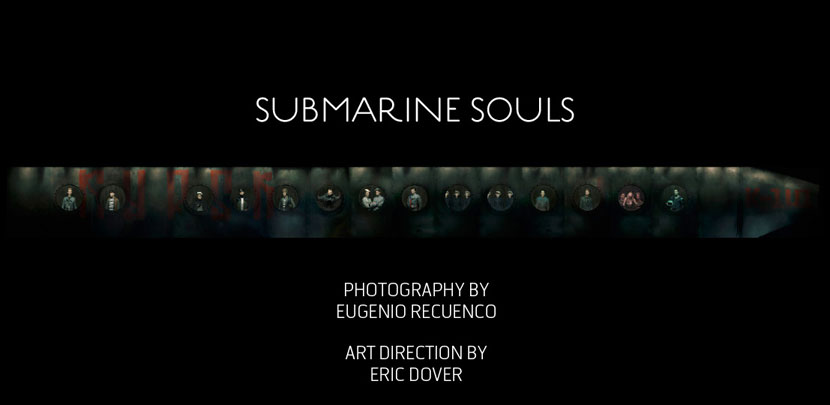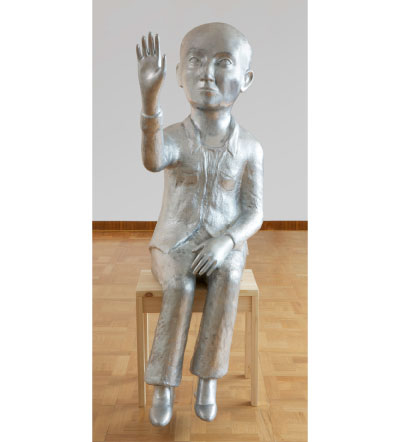
Kiki Smith Annunciation, 2008. Photograph by Joerg Lohse/ All images courtesy PaceWildenstein, New York All Artwork © Kiki Smith

Many Americans are well familiar with Kiki Smith, who came up on the latter end of feminism’s second wave as a member of the activist art collaborative Colab. She achieved prominence a decade later with her major New York exhibition in 1988. Now, at 56, she seems to be at the height of her career.
For her most recent site-specific installation at the Brooklyn Museum, Smith takes as her inspiration a remarkable 18th-century needlework from the Federal period by a woman named Prudence Punderson, entitled The First, Second and Last Scene of Mortality. Read from right to left, the parlor room scene depicts three stages of a woman’s life: birth (symbolized by a cradle), adulthood, and death (a coffin). What is rare for a work of that period is that female adulthood is symbolized not by a domestic act, but a creative one — the central figure appears to be drawing. Also unusual is the prominent inclusion of the nursemaid, an enslaved woman of African descent, which raises issues of historical oppression that fall not just along gendered, but also racial lines, and the pressing need for individual as well as creative freedom.
(more…)
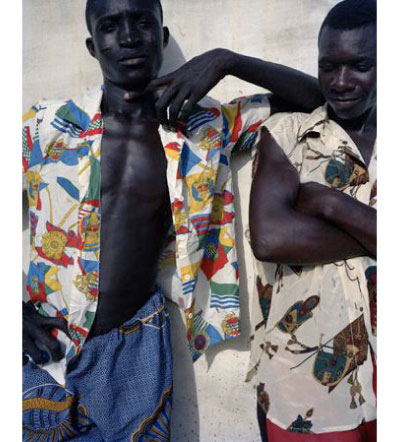
Gold Coast All photography by Viviane Sassen courtesy of Danziger Projects.

As global consumers we have become accustomed to beauty with exotic trimmings. For French VOGUE and i-D photographer Viviane Sassen, however, fashion trends are not to be confused with a deeper heartfelt mode of expression. Now on view at Danziger Projects through Apr 10 are selections from her three series ‘Die Son Sien Alles’ (The Sun Sees Everything), ‘Flamboya’, and ‘Ultra Violet’. Not quite haute couture, not quite documentary, Sassen’s photographs are the result of directed African pilgrimages and fall into an enigmatic category incorporating personal memory, imperialism, and sensual beauty. Evoking South Africa, Zambia and East Africa (Kenya, Uganda and Tanzania), they intimate the mythologized ‘Other’ but moreover signify the fruits of close collaborative efforts. African models bathed in shadows or fog, configured in abstract sculptural formations, or marked with strident color, dually invoke indigenous spirituality and colonial superstition. In Sassen’s world of magical realism, bodies overlap or emerge in lush, unusual settings, intertwining the oft-illusory politics of ethnicity and aesthetics.
The artist discussed her work and ties to Africa in a candid interview with PLANET
(more…)
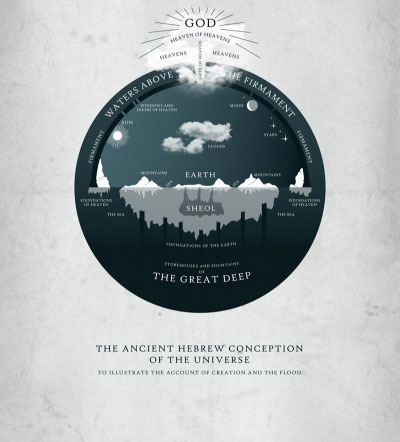
The Ancient Hebrew Conception of the Universe (All images by Michael Paukner) (Click Image to Enlarge)
 Michael Paukner
Michael Paukner’s infographics go beyond the usual function of the form: his original collection of posters titled “See The Bigger Picture” range from straight-faced renderings of crop circles and planetary “energy grid theory” to stunningly simple illustrations of the Pythagorean theorem or the mathematical golden ratio as expressed by planetary orbits.
The range is profound but the style remains the same: clean, elegant, and, above all, informative. But what Paukner chooses to inform us about is, more often than not, a piece of arcane legend or a pseudoscientific theory that few of us have ever heard of. Paukner explains, “It all began when a drunk guy behind a bar told me about Planet X and 2012 some years ago.… I bought some books and found some other topics like ancient knowledge, religion, old prophecies, crop circles, and other mind-blowing facts and theories. I started to feel like Fox Mulder, always searching for the truth out there.”
Several years later, Paukner’s Flickr page has registered millions of views in only six months, and he’s been the subject of features in several design magazines. Paukner is no stranger to fame — he’s also the lead singer of the popular Austrian band Excuse Me Moses, whose last album leaped to #13 on the Austrian charts — but the success of these graphics was very unexpected to him.
(more…)




Eating meals on the run is a reality of the urban lifestyle. Disposable take-out containers have become similarly embedded into our visual landscape — popping awkwardly out of garbage containers, littering streets, land, and oceans. As someone who has worked in the restaurant delivery business, I know how frustrating it can be to facilitate disposability at its peak; stock rooms full of plastic that will be used for just a brief instant, only to be thrown in the trash. Increased environmental damage from plastic bags and the rising cost of petrol-based products present an acute need for take-out packaging that doesn’t raise environmental red flags
The design solution is surprisingly simple and low tech, according to Israeli designer Tal Marco’s brilliant Banana Leaf packaging alternative featured in Designboom’s “Dining in 2015” design competition. The banana leaf wrap is a renewable package that utilizes ancient food preserving techniques from India and South East Asia, and innovative design to address modern environmental waste issues.
Marco is a designer that sees sustainable potential in the present. Instead of making more stuff, he looks to a by-product trashed in the Western world during agricultural production. He takes the banana leaf’s already waxy, flexible surface and puts it to new use in the tradition of up-cycling. According to Marco, the design uses no glue, and is adaptable to any product because the banana leaves are die-cut for easy opening along their natural edges. Marco’s banana leaf package design is a sustainable solution at it’s best, employing the principles of up-cycling existing materials and recycling cultural wisdom.

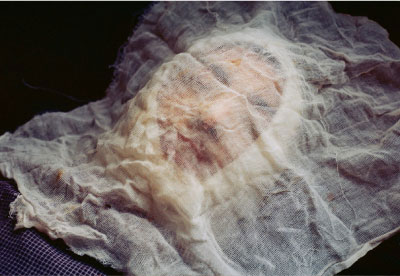
All images courtesy of Stephanie Sinclair / VII (www.viiphoto.com)


Since 2005, over 700 women have set themselves on fire in Afghanistan. Most incidents were caused by repeated abuse, fear of their husbands and petty household disputes.
Self-Immolation in Afghanistan: A Cry for Help is a series of photographs taken by photojournalist
Stephanie Sinclair, one of fifty-five artists chosen for this year’s
2010 Whitney Biennial. Over the course of three years, Sinclair documented a day in the life of Afghan women being treated for life-threatening, full-body burns. More jolting than the images alone, is the knowledge that these victims did this to themselves. Shockingly personal, the photos depict already hopeless women in the throes of utter despair, anguish and vulnerability. In Afghanistan, to obscure the daily violence taking place in their homes is commonplace — almost expected — making Sinclair’s unique point of view all the more jarring and significant. In this exclusive interview, Stephanie Sinclair talks to PLANET about abysmal desperation, inklings of change, and the indelible power of photography.
(more…)
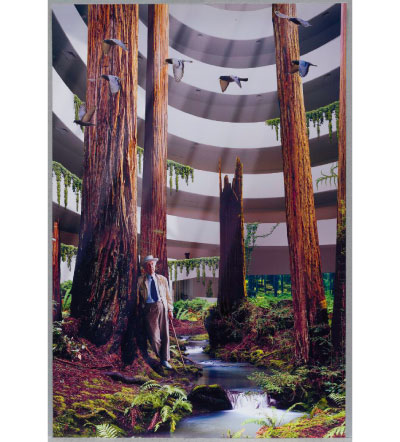
Saunders Architecture, FLW in His Element, 2009 All images courtesy Guggenheim Museum.

In conjunction with its 50th anniversary the Guggenheim Museum sponsored a design challenge, inviting almost 200 artists, designers, and architects to propose treatments for the signature spiraling atrium of its Frank Lloyd Wright building. The collection of proposals, Contemplating the Void: Interventions in the Guggenheim Museum, is on view now through April 28, and also posted on the museum’s website. The show offers a compelling snapshot of contemporary design currents, particularly of green building strategies.
The entries, and the media in which they’re presented, are impressively diverse. There are crayon drawings, watercolors, and pencil sketches, laser-cut models and computer renderings. The most straightforward proposals place one object within the building’s enormous central space. Different designers propose a chandelier, a hot air balloon, a column of water, a cloud of pigment, an oil rig, and the body of an Airbus A380. The more tectonic proposals, which respond to the space’s forms and circulation, are less inspired. Many designers install mirrors to distort perceptions of the space, build interconnecting passages within the space, and extend the existing curving ramp upwards, downwards, and outside the shell of the building.
(more…)


www.blipfestival.org

We’ve hit the boss level. Hally’s jumping around the stage like a hopped up game-show host, spitting out robotic vocals into a microphone. On the screen behind him, CHiKA’s visuals are spinning and pulsing a ride through letters spelling out his name. He’s wearing mirrored sunglasses and a red leather jacket, and his hair slicked back. He’s ripping through a manic set at the after-party for the second night of 2009’s
Blip Festival, and a room full of the world’s greatest chip musicians is dancing like mad. As he breaks into the first verse of “Surfin’ USA”, riding a stream of chords that hit like power-ups, it’s impossible to grasp how music on hardware three-decades old (in this case a stack of customized Famicoms) could be fueling an orgy of pixels and square waves straight out of a William Gibson novel.
This is the fourth Blip Festival, the brainchild of
8bitpeoples, a chip music collective founded by Jeremiah Johnson (a.k.a.
Nullsleep) in 1999 and co-administered by Josh Davis (a.k.a.
Bit Shifter), and The Tank, a performance art space that’s been the heart of the New York chip music scene since 2002.
Audio clip: Adobe Flash Player (version 9 or above) is required to play this audio clip. Download the latest version here. You also need to have JavaScript enabled in your browser.
(more…)
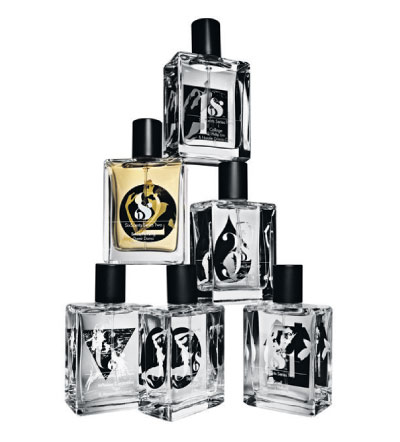

It’s no secret that the fragrance market is oversaturated, with about two hundred new perfumes launching each year. A perfume is the cheapest way to buy into a brand, and therefore a highly lucrative business. Everyone, be it a jewelry company or a newly minted Paris Hilton clone, wants a piece of the $15 billion-a-year pie.
Kaya Sorhaindo, the man behind the fragrance project Six Scents, wanted to do something different. He came up with an idea: take six young, promising fashion designers and pair them with expert perfumers in order to create unique scents manufactured in small amounts. Sorhaindo discussed this idea with Symrise, a German scent laboratory, and thus Six Scents Series One was born. Symrise provided the perfumers and Joseph Quartana, the co-owner of a SoHo boutique Seven, chose the designers. “We tried to pick designers without previous experience with fragrances but with a strong vision and their own esthetic,” Sorhaindo told me in a recent interview. The line up for Series One includes such names as Bernard Willhelm and Gareth Pugh. The current collection, Series Two, features Damir Doma and Henrik Vibksov, among others.
Cutting out the middlemen was essential to Sorhaindo. “It’s a one-on-one experience between the designer and the perfumer,” he said. “Once a frustrated perfumer who was collaborating with Bernhard Willhelm called me: ‘Bernhard wants a perfume that smells like air and water. I can’t create a fragrance that doesn’t smell like anything.’
(more…)
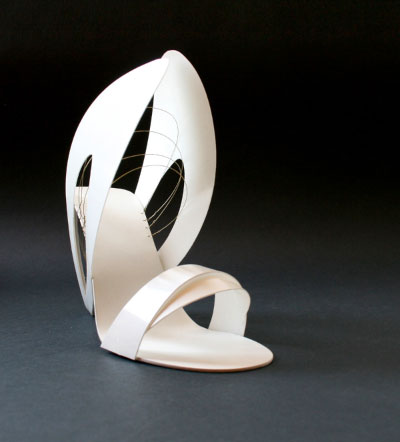

Coco Chanel was quoted as saying, “Fashion is architecture: it is a matter of proportions.” Sarajevo design student Tea Petrovic seems to have taken Coco’s statement to heart; for her graduating project, Petrovic designed a startlingly original collection of shoes based on the designs of the greatly influential Spanish architect Santiago Calatrava and the works of the late Russian Constructivist sculptor Naum Gabo. But Petrovic quotes another fashion designer in her statement, writing, “Bernard Figueroa once said: ‘There is so much space between a woman’s heel and the floor that one can use, and that is exactly what I tried to accomplish … using this space as much as possible.”
Discarding the fashion designer’s usual considerations of function and comfort, Petrovic focuses instead on the shoe as a pure geometric form, “rich in freedom and artistic expression”. She chose Gabo and Calatrava for their focus on figures “inspired mostly by nature, space, geometric shapes, and mathematical principles”.
The heel, specifically, is Petrovic’s focal point. To her, heels “are like supporting poles, constructive elements which carry the whole creative process”. Petrovic created the 3D heel shapes by multiplying, overlapping, and rotating 2D surfaces. The result is a series of exquisitely constructed sculptural works.
(more…)





 Facebook
Facebook Permalink
Permalink Digg
Digg Reddit
Reddit LinkedIn
LinkedIn StumbleUpon
StumbleUpon Tumblr
Tumblr
